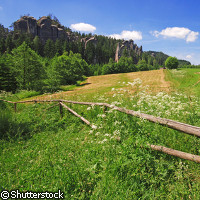Land use policy reform needed to combat greenhouse emissions
New research suggests that methane emissions from feedstock and nitrous oxide emissions from European agriculture are fully compensated for by the carbon dioxide sink provided by Europe's forests, grasslands and peat bogs. However, the trend towards more intensive agriculture and logging is likely to make Europe's land surface a significant source of greenhouse gases, warn researchers in the journal Nature Geoscience. To combat this situation, the development of land management policies which aim to reduce greenhouse gas emissions should be a priority. The research is a result of the EU-funded CARBOEUROPE ('Assessment of the European terrestrial carbon balance') project, which aims to understand, quantify and predict Europe's terrestrial carbon balance. CARBOEUROPE received EUR 16.3 million in funding from the 'Sustainable development, global change and ecosystems' Thematic area of the Sixth Framework Programme (FP6) and about EUR 30 million from national funding. Led by Detlef Schulze of the Max Planck Institute for Biogeochemistry in Germany, project researchers compiled estimates of European carbon dioxide, methane and nitrous oxide fluxes between 2000 and 2005 to develop a greenhouse gas balance for Europe. Their analyses revealed the existence of a carbon sink in European forests and grasslands that stores 305 million tonnes of carbon per year. A sink of this magnitude could offset nearly one-fifth of the emissions from fossil fuel consumption. However, agricultural land and drained peat bogs are emitting CO2, negating part of the effect of this sink. Furthermore, other greenhouse gases are released by land use, effectively cancelling out almost the entire effect of the carbon sink. This means that the European landscape only offsets some 2% of the greenhouse gas emissions from households, transport and industry. In order to make its calculations, the CARBOEUROPE project developed an observational and modelling programme capable of increased spatial and temporal resolution. The project is also investigating the main control mechanisms of carbon cycling in European ecosystems. To make their calculations, researchers calculated biological greenhouse gas fluxes in two ways. First, they subtracted industrial and geological fluxes from atmospheric fluxes. Second, the team measured the intake and release of CO2 in forests, grasslands, cropland and peat bogs, and scaled this up to the European level, taking into account changes in land use, the wood and food trades, river transport, methane oxidation and peat extraction. Project researchers also used a new methodological approach which included Russian forest inventories, new cropland models and revised estimates of forest respiration, as well as soil carbon losses and gains following land use change. 'These findings show that if the European landscape is to contribute to mitigating global warming, we need a new, different emphasis on land management,' said Professor Schulze. 'Methane and nitrous oxide are such powerful greenhouse gases, we must manage the landscape to decrease their emissions.'
Countries
Germany



